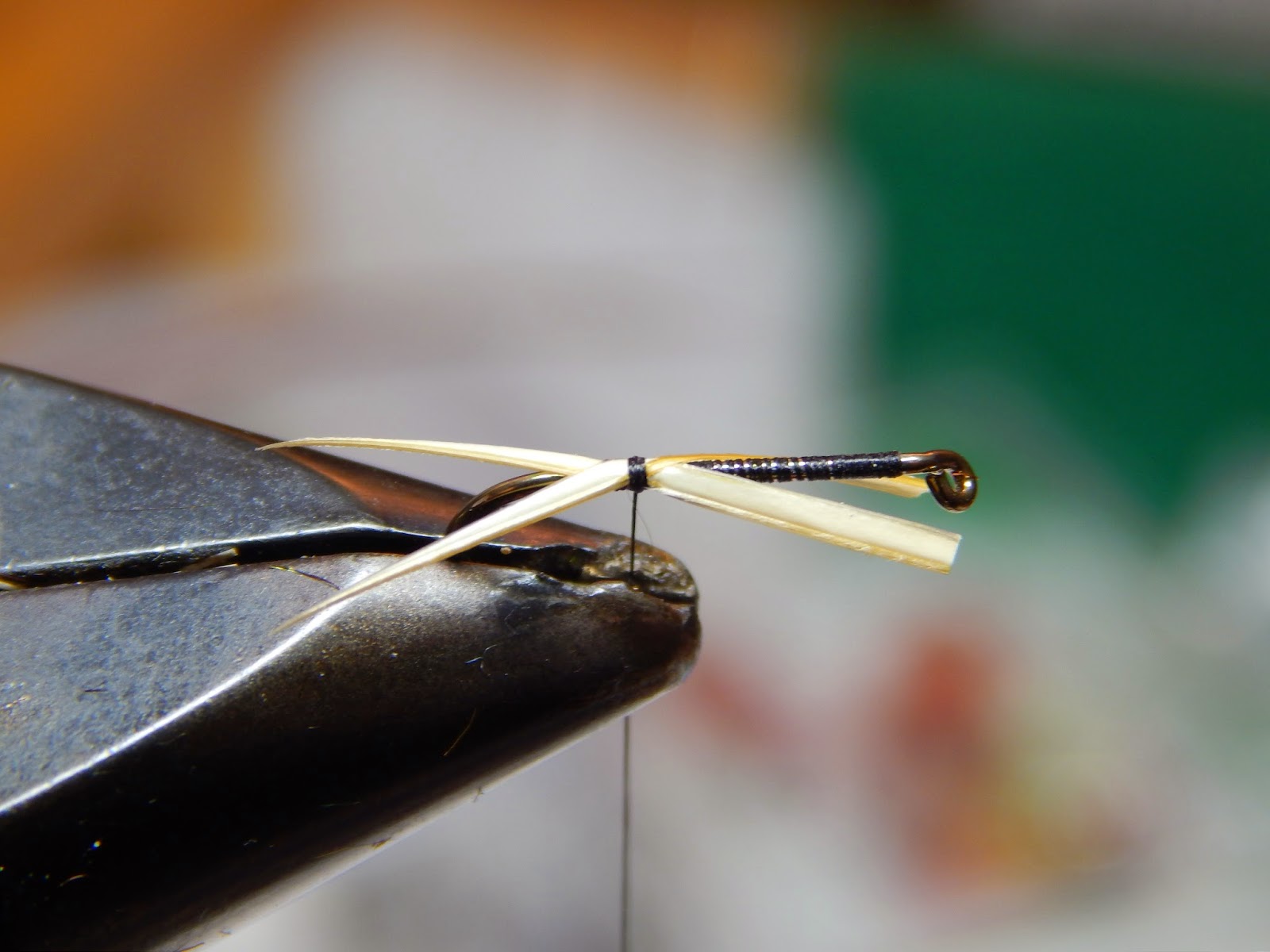For those who love small streams, wild trout, and life...in their simplest form
Monday, November 17, 2014
The "Smoky Mountain Fork Tail" Revisited.
I have received a few emails lately about a fly that I have had some success with. It's one of the flies I carry all of the time and will pull it out and fish it from time to time. The fly is known as the "Smoky Mountain Fork Tail". The pattern is a dry fly that has its following in the southern Appalachians. There is no known originator of the pattern, and is tied in many variations.
I first became aware of the "Fork Tail" from a poster I purchased years ago. The poster is called "Traditional Trout Flies of The Southern Appalachians". It's a full color poster with the patterns, their photos and recipes along with some of the history behind the fly. The "Fork Tail" became known to Ray Bergman back in the 1930's and gained national exposure.
Here is a little tutorial of how I tie this fly. The material list, Hook Mustad 9671 size 14...Tail goose biots...Body, I use opossum, but most any dry fly dubbing will work....Wing, goose biots...Hackle, Brown and grizzly, I use only brown.
Wrap a thread base to the rear and end it at about the hook point.
Select 4 goose biots.
Tie in 2 biots in a crossing pattern to form the tail. Trim butts and secure with thread.
Take dubbing and form a noodle and begin to wrap forward.
Tie in the other 2 biots crossing to form the wing.
Tie in a brown hackle and take several turns then secure and clip.
This is the finished fly. A top view and a profile. I tie this fly using olive and tan goose biots, but I have some yellow biots that I will soon experiment with. The dubbing I use is rust orange, and olive hares mask.
The Smoky Mountain Fork Tail. This southern trout fly works just fine on Connecticut trout as well.
Subscribe to:
Post Comments (Atom)









That's an interesting fly Alan and one that I think would work fine in Colorado as well. Thanks!
ReplyDeleteHoward,
DeleteThanks.
I love the histories of these regional flies.
It works well here, has to in Colorado.
nifty little pattern.
ReplyDeleteRM Lytle,
DeleteThanks.
Tie one up and try it on one of those little waters you fish.
This is quite an interesting fly. Thanks for sharing.
ReplyDeleteRI brook trout.
DeleteThanks.
It's works pretty good. I used it today and took quite a few brookies on it.
Very nice fly, and great step by step.
ReplyDeleteJustin Carfagnini,
DeleteThanks.
Tie a few up Justin and give them a shot.
Never thought about using biots before in a dry but it looks smashing!
ReplyDeleteCol,
DeleteThanks.
They work pretty well Col, would probably do OK on your burns.
Ingenious. Never saw this before. Thanks.
ReplyDeleteJim Yaussy Albright,
DeleteThanks.
It is Jim. Perhaps you'll try some.
Is this a dry fly or a nymph?
ReplyDelete